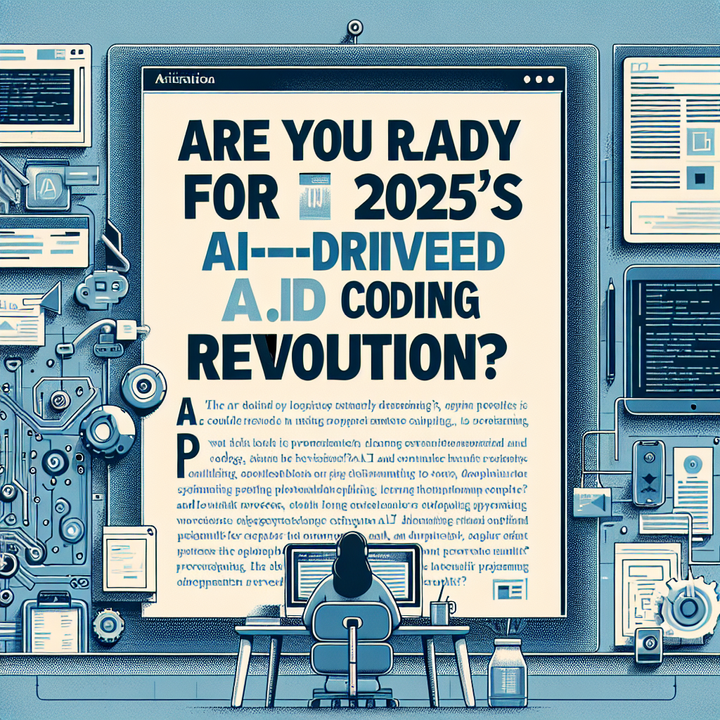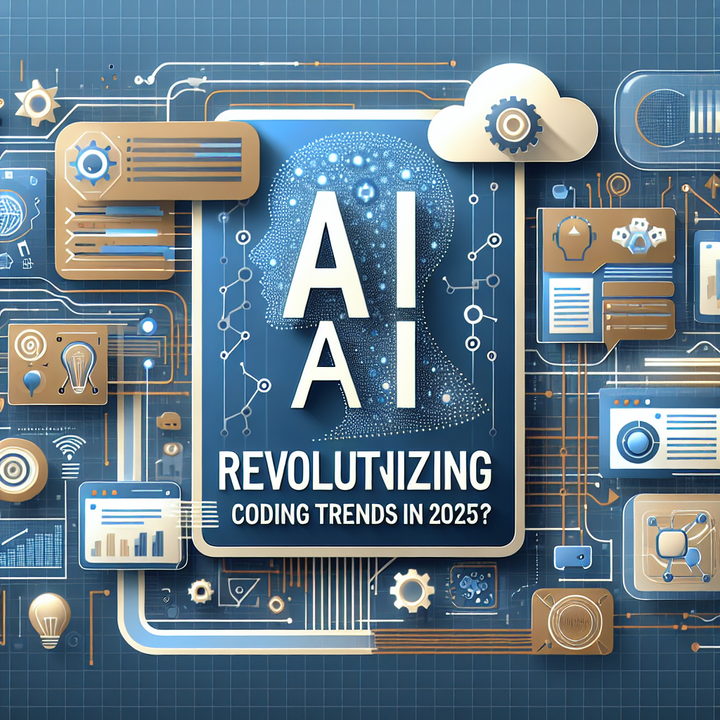Can London's Datacenter Boom Overload the Grid?

Introduction: London's Datacenter Landscape
London has long been at the forefront of technological innovation and digital transformation. As demand for cloud computing, AI-driven applications, and data storage continues to surge, the city has seen an unprecedented boom in datacenter construction. With major industry players racing to secure critical infrastructure, recent reports reveal that there are already 400GW of outstanding grid connection requests. This staggering figure not only underscores a rapidly growing market but also raises concerns regarding the stability and capacity of the energy grid to support such massive projects.
Rising Demand and the Grid Strain
The burgeoning growth of datacenters in London is both a testament to the city’s technological momentum and a harbinger of potential crisis. A report from Cushman & Wakefield highlights that the outstanding grid connection requests equate to around 400GW, with regulators estimating that 60-70% of these will never materialize. Datacenter developers are facing multiple hurdles: strict sustainability regulations, limited land availability, and the additional cost burdens imposed by grid constraints. As more facilities are planned to support the exponential rise in cloud and AI services, this competition for power is causing delays and uncertainties that ripple through the entire tech infrastructure ecosystem.
Impacts on Software Development and Cloud Services
Behind every datacenter build lies a vast ecosystem of applications, services, and innovative software developments that power modern enterprise and consumer technology. Developers and tech professionals rely on robust, efficient, and uninterrupted cloud services to build and deploy solutions ranging from AI programming to mobile app development. When the energy grid is strained and infrastructure projects face delays, the repercussions are felt across the software development landscape:
- Service Interruptions: Delays in datacenter projects can limit computing capacity, leading to slower cloud service deployments and potential downtime for critical applications.
- Increased Costs: Grid overload may lead to higher energy prices, which in turn could drive up the operational costs for startups and established businesses alike.
- Innovation Stagnation: With fewer reliable datacenters, enterprises might hesitate to adopt cutting-edge AI and machine learning solutions, slowing down the pace of digital transformation.
These challenges necessitate an urgent conversation between energy providers, datacenter developers, and software innovators to ensure that technological progress does not come at the expense of operational reliability.
Challenges Facing Datacenter Developers
As the need for more datacenters grows, developers are scrambling to secure grid connections and navigate a complex array of regulatory and logistical hurdles. Among the most pressing issues are:
- Grid Capacity Constraints: With 400GW of connection requests looming, the energy grid, especially in and around London, is pushed to its limits. Ofgem’s new queue management system aims to filter out non-viable projects, yet many legitimate builds face prolonged delays due to insufficient grid capacity.
- Regulatory and Environmental Hurdles: In addition to energy constraints, developers must contend with strict planning regulations and sustainability mandates. These factors can extend project timelines and escalate costs, making it difficult for new datacenter projects to reach fruition efficiently.
- Land and Location Challenges: The competition for prime real estate suitable for large-scale data facilities is fierce. While London has historically been a leading market in this sector, available land is becoming scarcer, pushing developers to consider emerging markets in the periphery like Milan, Helsinki, and Oslo.
- Technological Integration: Modern datacenters are not merely about physical space—they are hubs of advanced software control, energy management, and AI optimization. Integrating these technologies within existing infrastructures is a complex task that demands skilled experts in both hardware and software domains.
Innovative Approaches: AI and Smart Grid Management
In the face of these challenges, industry leaders are exploring innovative solutions to alleviate grid strain and ensure the continued growth of datacenter capacity. One promising avenue is the integration of artificial intelligence into energy management systems. AI-driven tools can predict demand spikes, optimize power allocation, and improve overall grid efficiency. Here are some of the cutting-edge approaches emerging in the sector:
- Smart Grid Technologies: Leveraging real-time data and machine learning algorithms, smart grid systems can dynamically adjust to fluctuating energy demands. This innovation promises not only to stabilize the grid but also to reduce energy waste across datacenter operations.
- Advanced Cooling Systems: As datacenters consume more power, the need for efficient cooling solutions becomes critical. New technologies in thermal management and liquid cooling systems are helping to reduce the energy footprint of these facilities.
- Renewable Energy Integration: With sustainability becoming a central concern, many developers are turning to renewable sources of energy, such as solar and wind, to power their operations. This transition not only aids in managing grid overload but also aligns with broader environmental goals.
- Decentralized Energy Storage: Battery storage solutions offer the promise of buffering peak demand, ensuring a more even distribution of power usage and reducing the strain on the grid during times of high demand.
These innovations illustrate the synergy between power engineering and software development, as tech professionals work hand-in-hand with energy experts to design systems that are both sustainable and scalable.
Planning for the Future: Lessons for Technology Sectors
For developers, tech startups, and enterprise IT architects, the challenges posed by the current grid strain are both a warning and an opportunity. As businesses increasingly depend on cloud-based services and AI-enabled applications, the reliability of datacenter infrastructure becomes a foundational element of technology strategy. Here are several key considerations for the tech industry as planning for the future unfolds:
- Resilience Planning: With energy constraints introducing an unpredictable variable into infrastructure planning, companies must prioritize resilience. This may include building hybrid solutions that combine on-premises resources with scalable cloud services or adopting failover systems to counteract potential outages.
- Investment in Energy-Efficient Technologies: Embracing technology that reduces energy consumption—such as virtualization, containerization, and AI-powered optimization—can help buffer the impact of grid limitations.
- Collaboration with Energy Providers: The situation underscores the need for closer cooperation between the tech industry and energy regulators. Joint initiatives aimed at modernizing the grid and creating incentives for renewable energy projects could foster a more sustainable development environment.
- Embracing Low-Code/No-Code Platforms: As datacenter operations and software development converge, the use of low-code and no-code platforms is emerging as a practical solution. These platforms allow developers to quickly adapt to changing conditions without the need for deep system-level overhauls, keeping project timelines agile even in fluctuating power scenarios.
Industry experts advise that this period of rapid change and adjustment is an ideal time to reexamine risk management practices and invest in forward-thinking technologies that will future-proof digital infrastructure.
The Role of Data and Research in Shaping Policy
Recent reports and market analyses, such as those provided by Cushman & Wakefield, offer critical insights that inform both public policy and corporate strategy. Understanding the intricate balance between datacenter growth and energy grid capacity is essential. Key data points include:
- Capacity Growth: Despite a healthy growth trajectory—9% year-on-year in EMEA—the pressure on the grid is intensifying, especially in hotspots like London, which is projected to hit 2GW capacity within the next three to five years.
- Regional Disparities: While London remains a dominant market, emerging hubs in Milan, Helsinki, and Oslo are rapidly gaining traction. These regions not only offer new opportunities for expansion but also serve as test beds for innovative infrastructure solutions.
- Policy Shifts: Adjustments in planning rules and the introduction of AI Growth Zones by the Labour government indicate a willingness to tackle infrastructure bottlenecks head-on. Such initiatives could potentially streamline approval processes and promote investment in sustainable energy projects.
Policymakers, industry stakeholders, and energy providers must work together to create a balanced framework that supports rapid technological adoption while ensuring that critical infrastructure keeps pace with demand.
Conclusion: Navigating the Power and Data Future
London’s struggle to secure grid connections amid a booming datacenter market offers a compelling case study of the complexities at the intersection of technology and infrastructure. As energy demands rise and regulatory challenges intensify, the tech community is called upon to innovate not only in software development and AI programming but also in energy management and infrastructure planning.
This multifaceted challenge is an opportunity for all stakeholders to rethink traditional models and adopt a more resilient, efficient, and sustainable approach to technology deployment. By embracing smart grid management, renewable energy integration, and advanced cooling systems, the industry can mitigate the risks of power overload and ensure that the datacenter revolution continues to drive progress in digital innovation.
In the final analysis, the UK's capital, long revered for its financial and technological prowess, stands at a crossroads. Whether it adapts to the realities of a power-constrained future or falters under the weight of its own ambitions will depend on the collective efforts of developers, policymakers, and energy experts. The lessons learned here will no doubt shape the future of datacenters not just in London, but around the globe, setting the stage for a new era of innovation that balances high performance with sustainable power solutions.
As London and its counterparts worldwide navigate these challenges, the need for collaboration and forward-thinking strategy becomes ever clearer. The convergence of datacenter technology, energy management, and creative software solutions promises to yield a resilient infrastructure capable of powering the next wave of digital transformation.
Ultimately, if the industry can rise to meet the grid crisis, the rewards will be enormous—a more stable energy landscape, sustained growth in digital innovation, and a future where technology and sustainability thrive hand in hand. For developers and tech leaders alike, the message is clear: adapt, innovate, and prepare for a future where power and data go hand in hand.



Comments ()